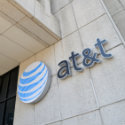
AT&T said it will not charge extra for customers to access the lowband 5G service it's planning to launch across millions of customers this year.
That's probably because AT&T's lowband 5G network isn't going to be much faster than its existing 4G network, the company says. "Data speeds on AT&T’s 5G network are initially expected to be comparable to 5G Evolution speeds at the time of launch, while speeds on the 5G+ network are faster (but with very limited coverage)," the operator explained in response to questions from Light Reading. (See below to decipher what all this means.)
Further, AT&T also confirmed it will not charge extra for customers to access its highband 5G network. That's different than what Verizon plans to do.
The issue is critical for AT&T, Verizon and other operators because it will determine exactly how they will actually make money from deploying 5G services.
Wading into the 5G mud
AT&T isn't helping matters with its confusing array of 5G brands and launch strategies. Here's how AT&T's 5G strategy breaks down:
5G Evolution (or 5G E): This is the label AT&T is placing on its LTE network. AT&T argues that the technologies that it is deploying on its LTE network -- including carrier aggregation and more spectrum -- lay the groundwork for 5G and thus earn the 5G moniker. Not surprisingly, AT&T has earned widespread condemnation for this branding tactic. AT&T's 5G E is available across most of its major markets today. 5G E connections go pretty fast, but 5G E is still just 4G LTE technology.
5G: This is the label AT&T is putting onto the lowband 5G service the operator said it is launching commercially to regular users later this year in places, including Indianapolis; Pittsburgh; Providence, RI; Rochester, NY; and San Diego. The operator said it will expand the offering nationwide throughout the first half of next year. AT&T's "5G" lowband service will use the official 5G NR transmission standard and will initially work in AT&T's 850MHz spectrum. As AT&T noted, its lowband 5G connections will go about as fast as its "5G E" connections (meaning 4G), at least initially.
5G+: This is the label AT&T is using for 5G NR transmissions in its millimeter-wave (mmWave) spectrum. The operator first launched 5G mmWave in December of 2018 in select locations in a handful of cities, and throughout this year has been expanding the offering to more locations. AT&T said it will offer 5G mmWave services in parts of 30 cities by "early" next year. However, AT&T has restricted its mmWave 5G+ offering only to "select" business customers, and is not selling it to regular customers. Indeed, the company's first lowband 5G phone won't even support its mmWave 5G network. That said, AT&T's 5G+ connections can go really fast, but due to the propagation characteristics of transmissions in mmWave spectrum, its 5G+ coverage will remain restricted to parts of major urban areas for the foreseeable future.
In order to dispel some of the confusion, AT&T is offering GIFs that attempt to explain things:


In case you're wondering, AT&T's marketing department isn't the only one working overtime in the age of 5G. Verizon calls its mmWave 5G network an "ultra wideband" offering, while Sprint calls its midband 5G network "true mobile 5G." T-Mobile so far is calling both its mmWave and lowband 5G networks just "5G."
5G profits and pricing
It's worth noting that so far, amid all the 5G hype, Verizon is the only operator that appears to think the technology is worth a premium. The operator in August began charging $10/month extra for its mmWave 5G service on one plan, and warned that it will expand that surcharge to additional plans at some unspecified point in the future.
Other operators aren't doing that though. Both T-Mobile and Sprint are reserving 5G for their most expensive unlimited plans, while AT&T said it will provide lowband 5G connections and highband 5G at no extra charge on its new mid- and high-tier unlimited plans but not on its entry level "Unlimited Starter" plan. The goal here, then, is to get customers to subscribe to more expensive unlimited plans.
Thus, here at the outset of 5G, the service remains more of an add-on to operators' existing plans rather than a way for them to actually make more money from their customers.
— Mike Dano, Editorial Director, 5G & Mobile Strategies, Light Reading | @mikeddano
About the Author(s)
You May Also Like




_International_Software_Products.jpeg?width=300&auto=webp&quality=80&disable=upscale)







